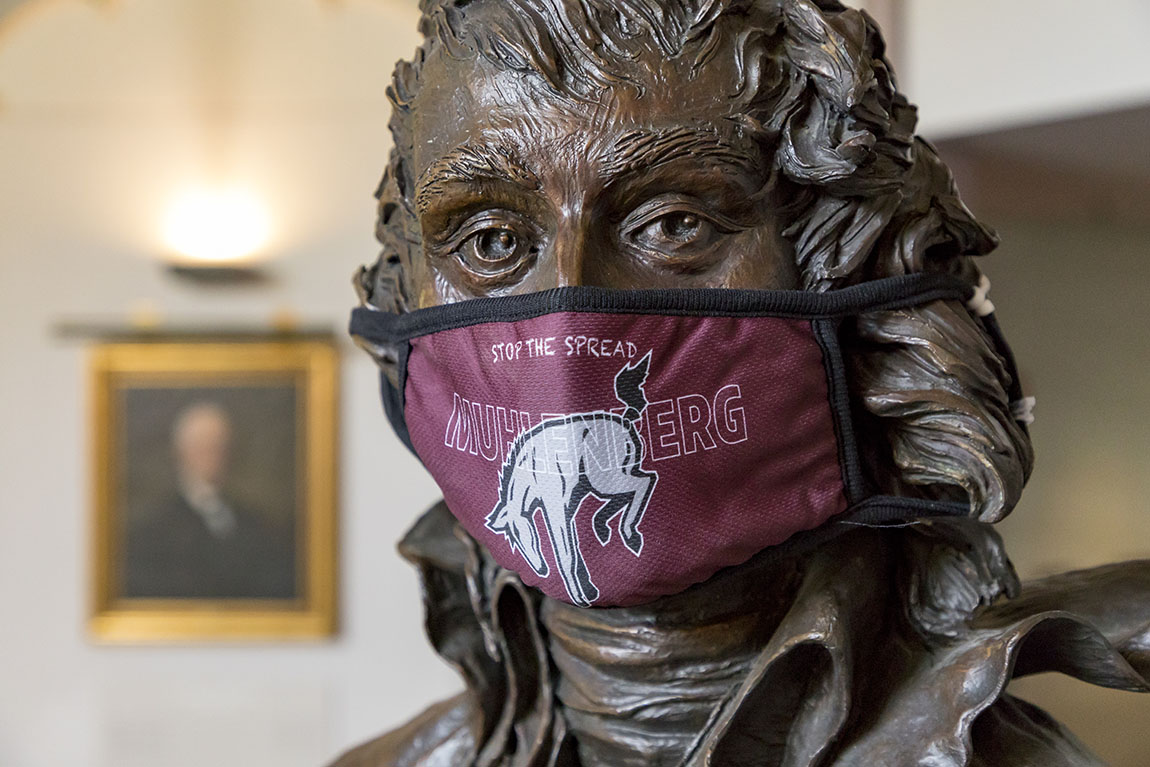What the Spring 2021 Semester Will Look Like
The College is welcoming back far more students than it did in the fall. Here’s what they can expect from their campus experience.Wednesday, January 27, 2021 10:37 AM
 Photo by Paul Pearson
Photo by Paul PearsonIn November, the College announced its plans for the Spring 2021 semester: It would begin later than usual, on February 8, and any student who wished to return to campus would be allowed back. The majority of the student body intends to take up this offer: Approximately 1,300 students are planning to live on campus, while another 270 will live off campus or commute.
Courses will be offered in a variety of formats: about two-thirds of courses will be completely online with the remaining third as in-person with social-distancing and mask-wearing practices or blended with a combination of in-person and online instruction. Instead of a week-long spring break—which would introduce the risk of travel-related infections—students and faculty will have three non-consecutive days off from class during the semester. Classes end May 14 and commencement is scheduled for May 24, though its format has yet to be determined. The Centennial Conference continues to meet and discuss available options for the spring athletics season within the current context of the pandemic.
A 21-page “Back to ’Berg” document details the health and safety measures the College has put in place to allow this number of students to return to campus, which housed only 590 students, most of them first-years, in the Fall 2020 semester. Here are some key steps being taken to protect the Muhlenberg community:
Return to Campus
Prior to arrival, students must complete a Canvas course on COVID-19 safety information and Muhlenberg’s COVID policies, undergo a virtual COVID-19 re-orientation program and receive a negative at-home COVID test result (the College is supplying the kits). The semester will begin with a “transitional modified quarantine” for all students who will access campus. This buffer period will allow the College to conduct on-campus testing of all students the week of February 8. During this period, which is set to end February 14, students must limit in-person contact with others, and dining will be take-out only. The data gathered during this baseline period will help inform planning for the rest of the semester.
Mandatory Masks
Face coverings that fit snugly over the mouth and nose are required both inside and outside on campus for students, faculty, staff, neighbors and visitors. The coverings can be removed for showering, eating and drinking. Students can remove their masks inside their residences or alone in a private room (like a rehearsal room) with the door closed; faculty and staff can be maskless alone in their offices with the door closed.
Distancing
Classroom spaces have been modified to allow for six feet of physical distancing between each person. Campus buildings are marked to encourage one-way traffic through doorways, in stairwells and in hallways. Plexiglass barriers are in place where distancing is impossible (at checkout counters, for example). No more than 50 percent of faculty and staff will be on campus at any given time to prevent crowding.
The College recommends that meetings, study groups and office hours all be conducted virtually. The next best option is outdoors, masked, at a distance. While not recommended, very small indoor meetings are permitted in some circumstances if all participants remain at least six feet apart and wear proper face coverings throughout.
Ventilation, Cleaning and Hygiene
In indoor spaces, the College has increased circulation of outdoor air as much as possible and will change all HVAC filters before students return to campus. Campus has undergone enhanced cleaning protocols since COVID began that will continue throughout the spring. The College installed no-touch toilets, sinks and soap and paper-towel dispensers throughout campus, and hand sanitizer flows freely in all campus buildings.
Testing and Tracing
Everyone on campus must complete a symptom-checker questionnaire daily on the iMuhlenberg app; anyone who gets a red X is prohibited from entering campus buildings or attending classes and events. Temperature screenings will also take place prior to entry to certain facilities.
The College is implementing a four-pronged testing approach: In addition to the aforementioned pre-arrival testing, students will undergo regular surveillance testing. Symptomatic testing of individuals will be available through the Health Center, which will also provide post-exposure testing for contacts of students who test positive. Staff have been trained to assist with contact tracing on campus.
If a student tests positive, they will be required to isolate for at least 10 days after their symptoms first appeared and until they’ve been fever-free without medication for at least 24 hours. Asymptomatic positive students are required to isolate for at least 10 days after their positive test. Faculty and staff who test positive will not be permitted to return to campus until they’ve met these same standards.
Community Updates
The College’s COVID-19 Dashboard will update weekly beginning February 12 with information about case counts, the number of tests performed and the current “campus alert level.” There are four levels, ranging from “new normal” to “very high,” with different restrictions planned for each level. Changes in alert levels (and, therefore, restrictions) will also be communicated to the campus community via email. (The semester will begin at Alert Level 3 - High Alert due to the risks inherent in traveling to campus as COVID-19 levels continue to be high in much of the country, including the Lehigh Valley.)
